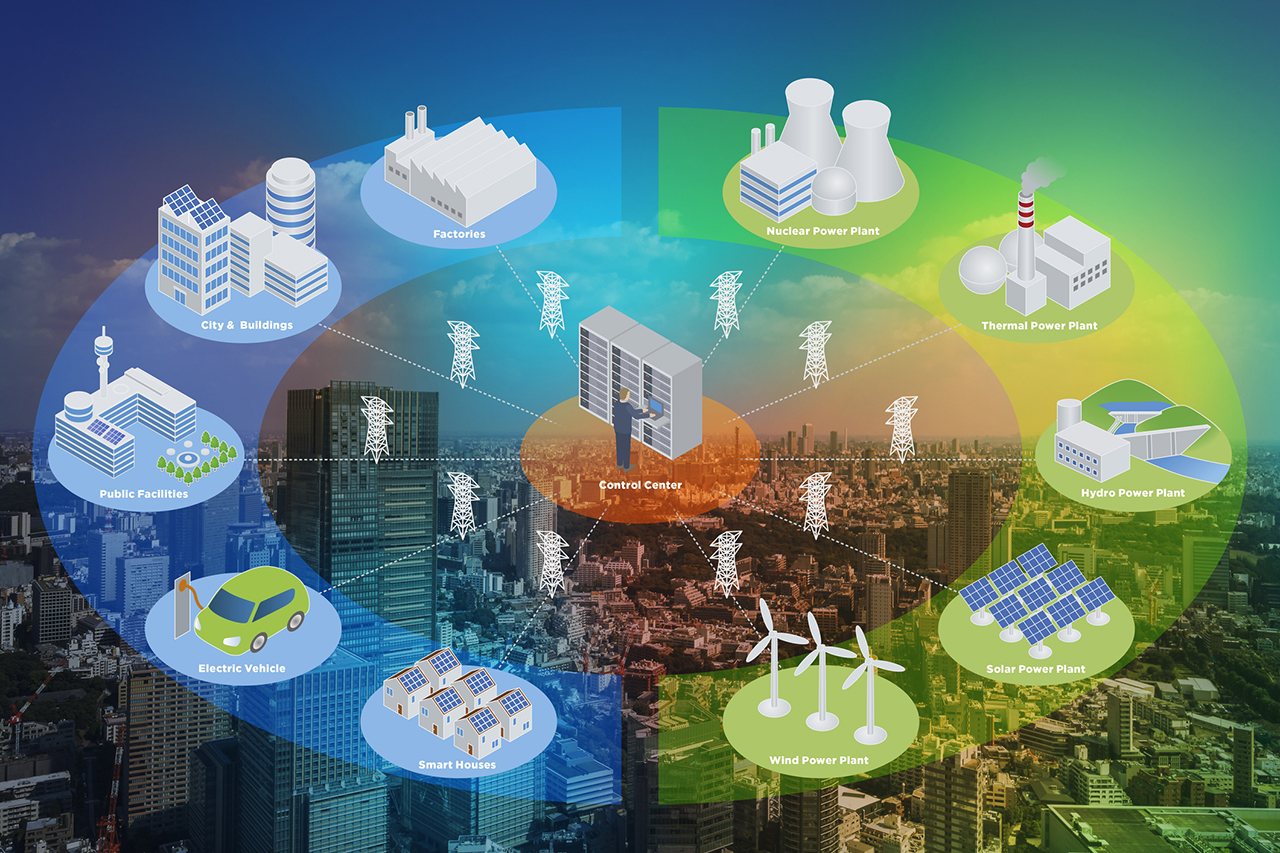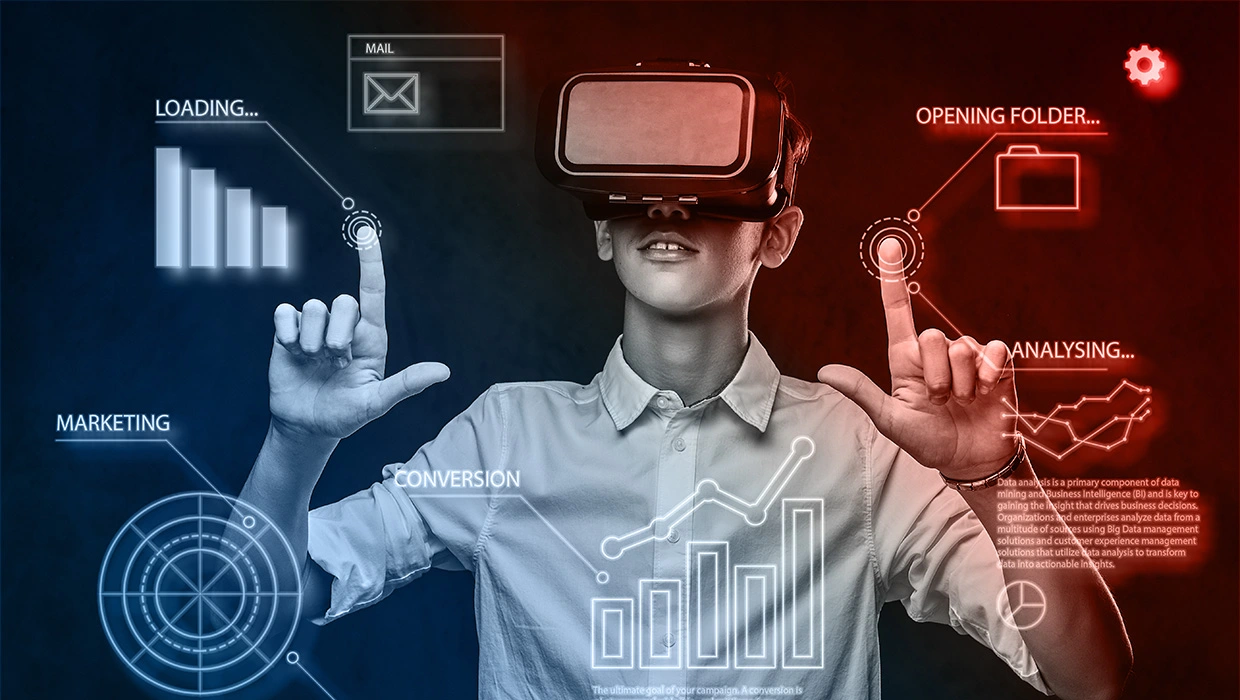As global energy demand continues to rise, the need for a more efficient, reliable, and sustainable energy distribution system has never been greater. Traditional power grids, which rely on centralized control and limited communication between different parts of the grid, are proving to be inefficient and unable to meet the demands of modern society. This is where the smart grid comes in—a revolutionary technological solution that promises to transform how we generate, distribute, and consume electricity.
In this article, we will explore the concept of the smart grid, its components, benefits, challenges, and the potential it holds for the future of energy management.
What is a Smart Grid?
A smart grid is an advanced power network that uses digital technology to monitor and manage the flow of electricity from power plants to consumers efficiently. Unlike traditional grids, which rely on manual control and communication, smart grids utilize two-way communication between the utility and consumers to improve the reliability and efficiency of the system.
Smart grids combine traditional electrical grid infrastructure with cutting-edge information and communication technologies (ICT) to enable real-time data exchange, automated control, and optimized energy distribution. This innovation allows for better integration of renewable energy sources, improved demand response, and enhanced grid resilience.
Components of the Smart Grid
1. Smart Meters
At the heart of the smart grid are smart meters, which are advanced digital devices that measure electricity consumption in real time. Unlike traditional analog meters, which only record usage data periodically, smart meters provide detailed data on energy consumption, allowing consumers and utilities to monitor and manage energy use more efficiently. Smart meters can transmit data remotely, reducing the need for manual meter readings and enabling more accurate billing.
2. Advanced Sensors
Sensors are deployed across the grid to monitor conditions like voltage, current, frequency, and power quality. These sensors collect real-time data on the health of the grid and send it back to utility companies, providing them with critical information to detect and address issues like power outages, equipment failures, or overloads.
3. Distribution Automation
Distribution automation involves the use of smart devices and software to automatically control the flow of electricity. This includes switching, reconfiguring, and isolating segments of the grid in case of faults or overloads. It helps utilities quickly detect and fix problems, reducing the time and costs associated with outages and improving the overall reliability of the system.
4. Energy Storage Systems
Energy storage systems, such as batteries, play a crucial role in stabilizing the grid. These systems store excess energy generated during periods of low demand and release it when demand spikes. The integration of energy storage with the smart grid enables more efficient use of renewable energy sources like solar and wind, which are intermittent in nature.
5. Renewable Energy Integration
Smart grids are designed to better accommodate renewable energy sources such as solar, wind, and hydropower. Unlike conventional grids, which struggle with the variability of renewable energy generation, smart grids use advanced forecasting, real-time data, and automated controls to integrate these energy sources more effectively, helping to stabilize supply and demand.
6. Demand Response Systems
Demand response programs allow utilities to communicate with consumers and adjust their electricity usage during peak periods or when there is a strain on the grid. Consumers can participate in these programs by reducing their energy consumption during peak hours in exchange for incentives such as lower electricity bills. This helps balance supply and demand, avoiding grid overloads and improving overall efficiency.
7. Communication Infrastructure
Communication technologies such as wireless networks, fiber optics, and other broadband systems enable the two-way flow of information between all components of the grid. This communication infrastructure is critical for the real-time monitoring and control of the grid, ensuring that energy is distributed where and when it is needed.
Benefits of the Smart Grid
1. Improved Energy Efficiency
Smart grids enable more efficient use of energy by optimizing the distribution of electricity. Real-time monitoring and automated control help prevent energy waste, while smart meters provide detailed consumption data that empowers consumers to reduce their energy usage. This leads to lower costs for both utilities and consumers, as well as reduced environmental impact.
2. Enhanced Reliability and Resilience
One of the most significant benefits of the smart grid is its ability to enhance the reliability of the power system. With advanced sensors and real-time monitoring, utilities can detect and address potential issues before they become major problems, reducing the frequency and duration of power outages. In the event of a disruption, smart grid systems can automatically reroute power to unaffected areas, ensuring continuity of service.
3. Integration of Renewable Energy
The integration of renewable energy sources into the grid is a key goal of the smart grid. By using real-time data and advanced forecasting techniques, smart grids can better manage the variability of renewable energy generation, ensuring a stable and reliable supply of electricity. This helps reduce dependence on fossil fuels and supports the transition to a more sustainable energy future.
4. Cost Savings
Smart grid technology enables utilities to optimize energy production and distribution, reducing operational costs. Consumers also benefit from smart grids by gaining better control over their energy usage through smart meters and demand response programs. As a result, both utilities and consumers can save money while contributing to a more efficient energy system.
5. Environmental Benefits
By improving energy efficiency and supporting the integration of renewable energy, smart grids help reduce greenhouse gas emissions and the environmental impact of electricity generation. Smart grids also encourage consumers to adopt energy-saving behaviors, further reducing their carbon footprint.
6. Empowerment of Consumers
Smart grids provide consumers with more control over their energy usage. Through smart meters and energy management systems, consumers can monitor their consumption in real time, make informed decisions about their energy use, and participate in demand response programs. This empowers them to reduce their energy costs and contribute to the sustainability of the grid.
Challenges of Implementing a Smart Grid
1. High Initial Costs
One of the biggest challenges in implementing a smart grid is the significant upfront investment required. The installation of smart meters, sensors, communication infrastructure, and other components can be expensive, particularly for utilities that need to upgrade their existing infrastructure. However, these costs are often offset by long-term savings in energy efficiency and grid reliability.
2. Data Security and Privacy Concerns
The smart grid relies on the exchange of vast amounts of data, which raises concerns about data security and privacy. Smart meters and other devices collect detailed information about consumer energy usage, which could potentially be accessed by malicious actors. Ensuring the security of this data is crucial to gaining public trust and ensuring the success of smart grid systems.
3. Integration with Existing Infrastructure
Integrating smart grid technology with legacy infrastructure can be complex and challenging. Many utilities have outdated equipment and systems that may not be compatible with modern smart grid technologies. Upgrading these systems requires careful planning and coordination to avoid disruptions and ensure a smooth transition.
4. Regulatory and Policy Challenges
The implementation of smart grid systems requires supportive policies and regulatory frameworks. Governments must create rules and standards to ensure the effective and equitable deployment of smart grid technologies. Additionally, regulatory bodies must address issues related to pricing, consumer rights, and the sharing of data.
The Future of the Smart Grid
The future of the smart grid is bright, with ongoing advancements in technology and increasing demand for cleaner, more efficient energy systems. As the adoption of renewable energy grows and energy storage technologies improve, smart grids will play an even more critical role in managing the complex and dynamic energy landscape. Innovations such as artificial intelligence, machine learning, and blockchain technology are expected to further enhance the capabilities of smart grids, making them more efficient, secure, and responsive.
In the coming years, we can expect to see smart grids become the backbone of a more sustainable, resilient, and cost-effective energy system. As these technologies evolve, they will empower consumers, reduce environmental impact, and drive the transition to a cleaner, greener energy future.
Conclusion
The smart grid represents a major leap forward in the way we generate, distribute, and consume electricity. With its advanced technology, real-time monitoring, and integration of renewable energy sources, the smart grid promises to improve energy efficiency, enhance grid reliability, and reduce costs for consumers. While there are challenges to overcome, the benefits of a smart grid are clear, and its potential to shape the future of energy is immense. By investing in smart grid technology today, we can create a more sustainable and resilient energy system for tomorrow.



